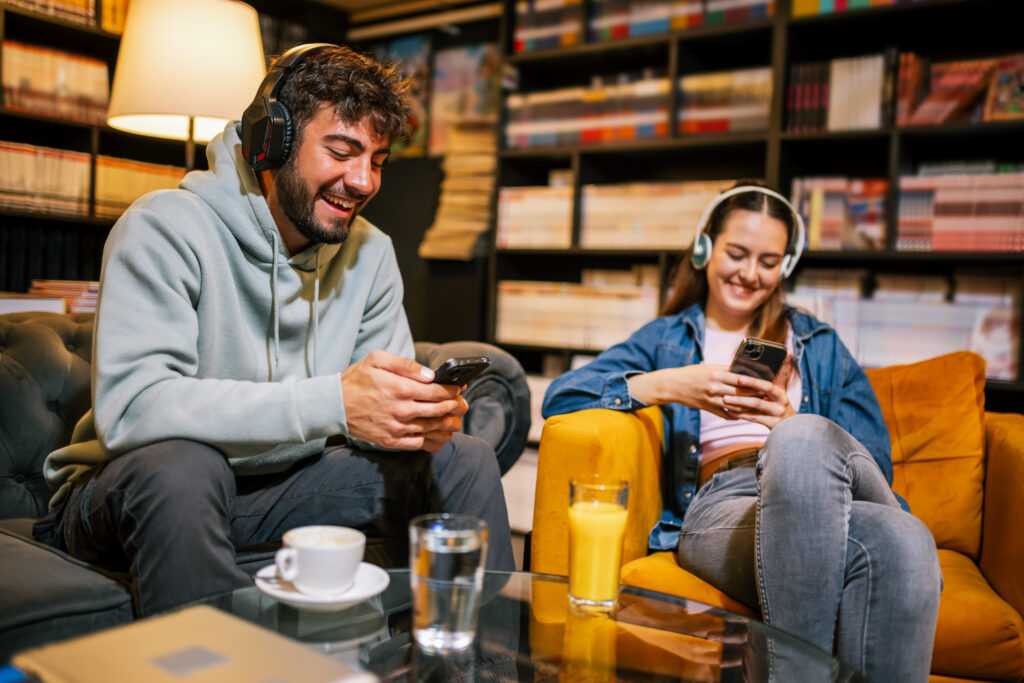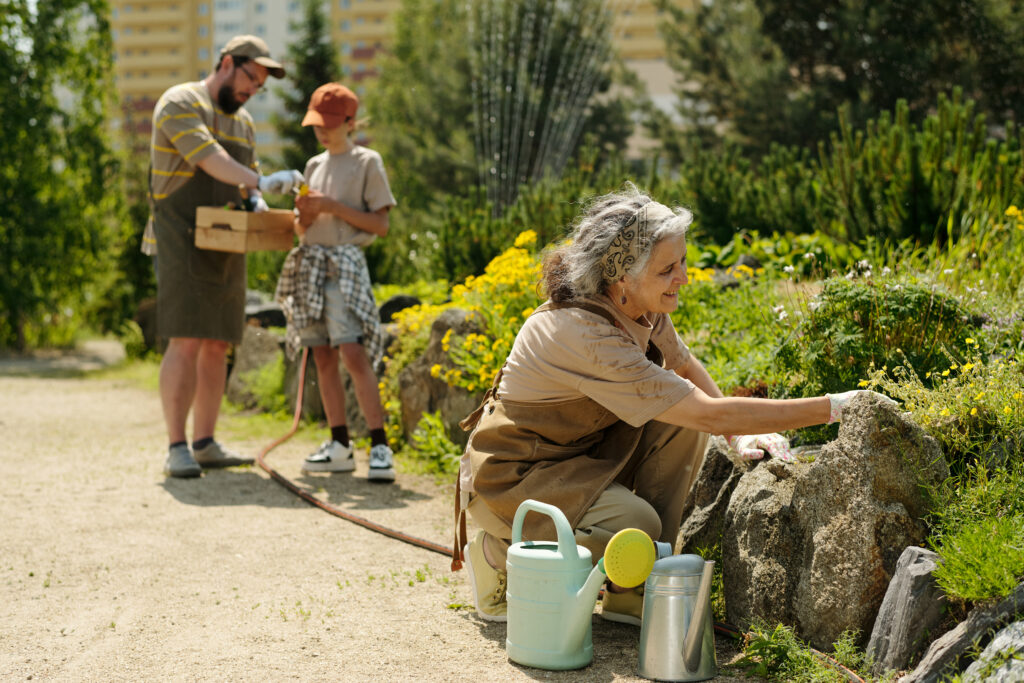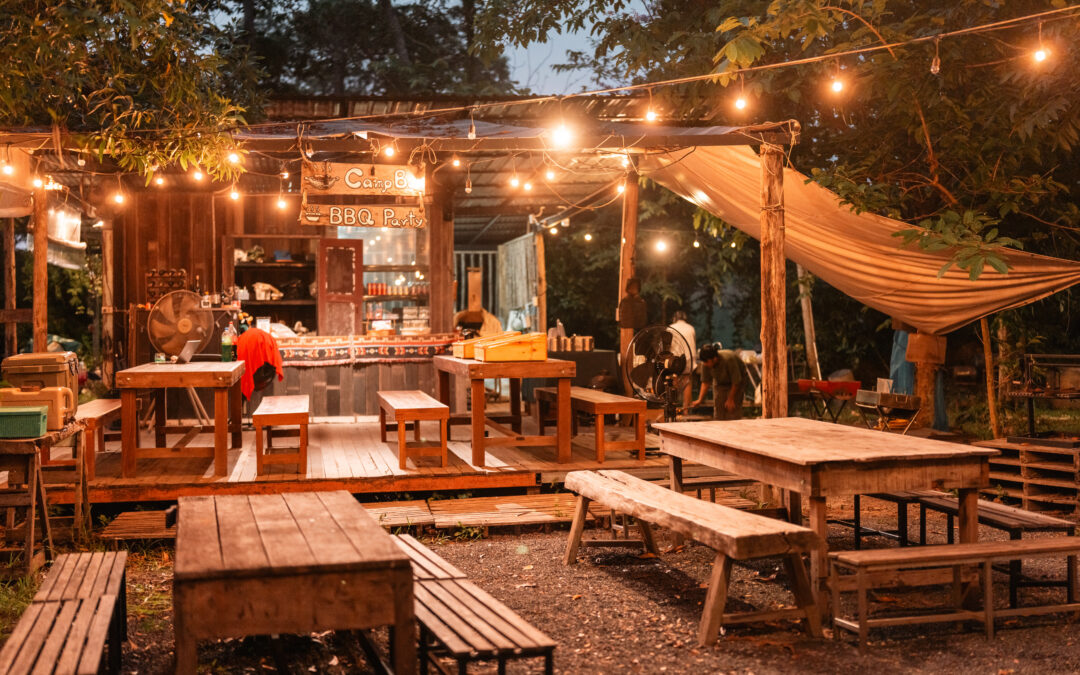Sociologist Ray Oldenburg coined the term “third place” in 1989 to describe the social spaces distinct from home (first place) and work (second place).
He argued that communities need these informal gathering spots – coffee shops, bookstores, libraries, parks, barber shops, community centers – where people can connect casually without the structured roles of home or work life.
Then we spent several decades systematically destroying them. And now, in 2025, we’re desperately trying to get them back.
What Happened to Third Places?
The decline of third places has been gradual but devastating.
Independent coffee shops were replaced by Starbucks designed for quick transactions, not lingering. Local bookstores closed as Amazon dominated retail. Mall hangout culture died as malls themselves became obsolete. Public spaces became increasingly surveilled, privatized, or hostile to loitering.
Suburban sprawl created communities designed around cars rather than walkable gathering places. Zoning laws separated residential from commercial areas, making it harder to walk to community spaces. Parks and libraries faced budget cuts, reducing hours and services.
Social media promised to replace physical gathering with digital connection. Why go to a coffee shop to see people when you can scroll Instagram? The pandemic accelerated this shift, normalizing isolation and making remote everything the default.
The result: widespread loneliness, community fragmentation, political polarization, and the feeling that nobody knows their neighbors anymore.
The Third Place Void
Research on loneliness paints a concerning picture.
Surgeon General Vivek Murthy declared loneliness an epidemic in 2023, calling it as harmful to health as smoking 15 cigarettes a day. Studies link social isolation to increased rates of depression, anxiety, heart disease, and early death.
Americans report having fewer close friends than previous generations. Many can’t name a single person they could call in an emergency. Community membership – churches, clubs, volunteer organizations – has plummeted.
The absence of third places contributes directly to this. When you don’t have casual spaces to encounter neighbors and strangers, you don’t build the weak ties that make communities function. You become isolated in your home, your car, your workplace bubble.
Gen Z, despite being “digital natives,” reports the highest rates of loneliness. Growing up with social media but without physical gathering places left them connected but alone.
The Third Place Renaissance
But something is shifting in 2025.
People are actively seeking out third places again. Coffee shops with comfortable seating are packed with people genuinely staying for hours. Libraries are seeing increased foot traffic as people rediscover them as free community spaces. Bookstores that create welcoming atmospheres are thriving while pure retail struggles.
Parks and public spaces are being reimagined with community connection in mind – adding seating, programming events, creating reasons for people to gather. Community gardens, tool libraries, maker spaces, and other shared-resource spaces are emerging in cities nationwide.
Even bars and restaurants are recognizing that being a third place – a regular spot where locals gather – is better for business than optimizing for quick table turnover.
What Makes a Good Third Place?
Oldenburg identified specific characteristics that define effective third places:
Neutral ground: You’re not required to play specific roles. Unlike home (family roles) or work (professional roles), you can just be yourself. Nobody owns the space in a way that makes others feel like guests.
Leveling place: Social hierarchy is minimized. The regular at the coffee shop isn’t more important than the newcomer. Economic differences become less visible. Connection happens across usual social boundaries.
Conversation is the main activity: Third places facilitate talk. They’re not focused on consumption or productivity but on interaction. The environment supports casual conversation with both friends and strangers.
Accessibility and accommodation: Good third places are easy to get to, open during convenient hours, and comfortable for extended stays. They’re designed for humans to linger rather than for transactions to happen quickly.
The regulars: Familiar faces create continuity and welcome newcomers into the community. Seeing the same people consistently builds relationships organically over time.
Low profile: Third places don’t need to be fancy or impressive. In fact, unpretentious spaces often work better because they’re accessible to everyone regardless of income or status.
Playful mood: The tone is light, humorous, and welcoming rather than serious or formal. Laughter and casual banter are encouraged.
A home away from home: Despite being public, good third places provide the warmth and belonging usually associated with home. Regulars feel ownership and investment in the space.

Modern Third Place Examples
What does this look like in practice in 2025?
Coffee shops that encourage staying: Comfortable seating, no time limits, free wifi, outlets at every table. Some explicitly welcome people studying, working, or just sitting. The business model prioritizes building community over maximizing turnover.
Libraries reimagined: Modern libraries offer far more than books. They’re hosting community events, providing meeting spaces, offering technology access, and positioning themselves as democratic gathering places open to everyone regardless of ability to pay.
Bookstores with cafes: Independent bookstores are surviving by becoming destinations – hosting author events, book clubs, poetry readings. Adding cafes that encourage customers to sit and read creates all-day gathering spaces.
Community workshops and maker spaces: Tool libraries where you can borrow equipment. Maker spaces with shared workshops. Community kitchens and gardens. These create third places organized around shared interests and skills.
Parks with programming: Parks that host farmers markets, outdoor movies, concerts, and community events become gathering places rather than just empty green space people walk through.
Game stores and comic shops: Shops hosting game nights, D&D campaigns, and tournaments create regular community gathering around shared hobbies.
Barbershops and salons: Some are returning to earlier functions as community conversation spaces, not just transactional service locations.

Why This Matters for Mental Health
The return of third places has significant implications for wellbeing.
Weak ties matter. Not every relationship needs to be deep friendship. The familiar barista who remembers your order, the regular at the library you nod at, the person you chat with at the community garden – these casual connections provide a sense of belonging and community without the intensity of close friendship.
Loneliness relief doesn’t require deep relationships. Simply being around other humans in friendly contexts reduces loneliness. Working in a coffee shop surrounded by people feels different than working alone at home, even if you don’t talk to anyone.
Third places combat political polarization. When you regularly encounter people different from you in casual, low-stakes settings, they become harder to demonize. Shared physical spaces create empathy that online spaces rarely do.
Sense of belonging: Knowing you have places where you’re a familiar face, where you can show up and feel welcome, provides psychological security. You’re not just isolated in your apartment – you’re part of a community.
The Economic Challenge
Here’s the problem: good third places often struggle economically.
A coffee shop that encourages people to stay for hours makes less money per seat than one optimized for quick turnover. Libraries and parks are public goods that require funding but generate no revenue. Independent bookstores operate on thin margins.
Capitalism doesn’t naturally produce third places because they’re not maximally profitable. They require intentional choices to prioritize community over pure economic optimization.
Some cities are recognizing this and providing support – grants for community spaces, zoning that encourages mixed-use development, funding for libraries and parks. But it’s swimming against dominant economic incentives.
Subscription or membership models might help. Some coffee shops charge monthly membership fees that let you stay all day. Libraries are inherently free but rely on public funding. Community spaces sometimes ask for donations or volunteer time.
The question is whether we collectively value third places enough to support them financially, even when they’re not economically optimal.
Design Matters
Creating effective third places requires intentional design choices.
Seating arrangement: Small tables and individual chairs create isolation. Communal tables, grouped seating, and spaces where strangers might naturally interact facilitate connection.
Technology balance: Free wifi attracts people but can prevent interaction if everyone’s staring at screens. Some spaces designate certain areas or times as device-free to encourage conversation.
Noise levels: Spaces need to be quiet enough for conversation but lively enough to not feel sterile. Music and ambient noise create comfortable sound levels for talking.
Duration encouragement: Comfortable seating, available bathrooms, food and drink, climate control – these signal that people can stay a while. Time limits and uncomfortable chairs signal you should leave quickly.
Multiple zones: Best third places have areas for different activities – quiet corners for reading, communal tables for socializing, event spaces for programming. Flexibility serves different needs.
Accessibility: Physical accessibility (ramps, elevators, accessible bathrooms) but also economic accessibility (free or low-cost, or clearly communicating that lingering without purchasing is okay).

Building Third Places in Your Community
You don’t have to wait for perfect third places to appear. You can help create them.
Support businesses that function as third places. Patronize coffee shops and bookstores that welcome lingering. Buy something regularly to support their business model even if you don’t always purchase.
Advocate for public investment. Library funding, park maintenance, community center programming – these require public support. Show up to city council meetings. Vote for candidates who value public spaces.
Start programming in existing spaces. Organize book clubs, walking groups, game nights. If your library or coffee shop has space, propose events that bring people together around shared interests.
Be a regular. Choose a few places and go consistently. Familiarity creates community. Say hello to other regulars. Be the friendly face that makes newcomers feel welcome.
Respect the space. Buy something if it’s a business. Follow rules and norms. Be considerate of others. Help maintain the culture that makes third places work.
Create low-barrier gatherings. Organize casual meetups in parks or public spaces. “Anyone can show up” events create opportunities for people to connect without requiring existing relationships or invitations.
Why We’re Obsessed
The third place conversation is resonating because it names what’s been missing.
We’ve felt the isolation but couldn’t always articulate the cause. Understanding that it’s not personal failure but structural absence – the elimination of gathering places – is clarifying and somewhat relieving.
It offers a solution that doesn’t require massive personal change. You don’t need to overhaul your life or move to a new city. You just need to find or create spaces where you can regularly be around other humans.
It addresses multiple problems simultaneously. Loneliness, political division, lack of community, isolation, mental health struggles – third places don’t solve everything, but they help with all of it.
It’s achievable. Unlike solving climate change or fixing the economy, creating third places is something that can happen at the local level through relatively small actions and investments.
Most fundamentally, the return of third places represents hope that we can reclaim human connection in an increasingly digital and isolated world. That we can rebuild communities. That we don’t have to accept loneliness as inevitable.
So find your third place. Or help create one. Show up regularly. Say hello to familiar faces. Strike up conversations with strangers. Be the person who makes others feel welcome.
Your local coffee shop, library, park, or bookstore isn’t just a place. It’s potential community. It’s connection waiting to happen. It’s the antidote to isolation that we’ve been missing.
All you have to do is show up.

